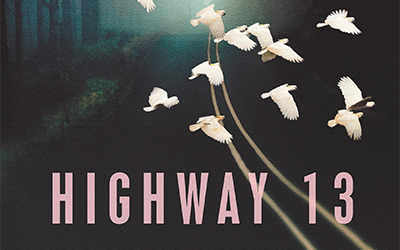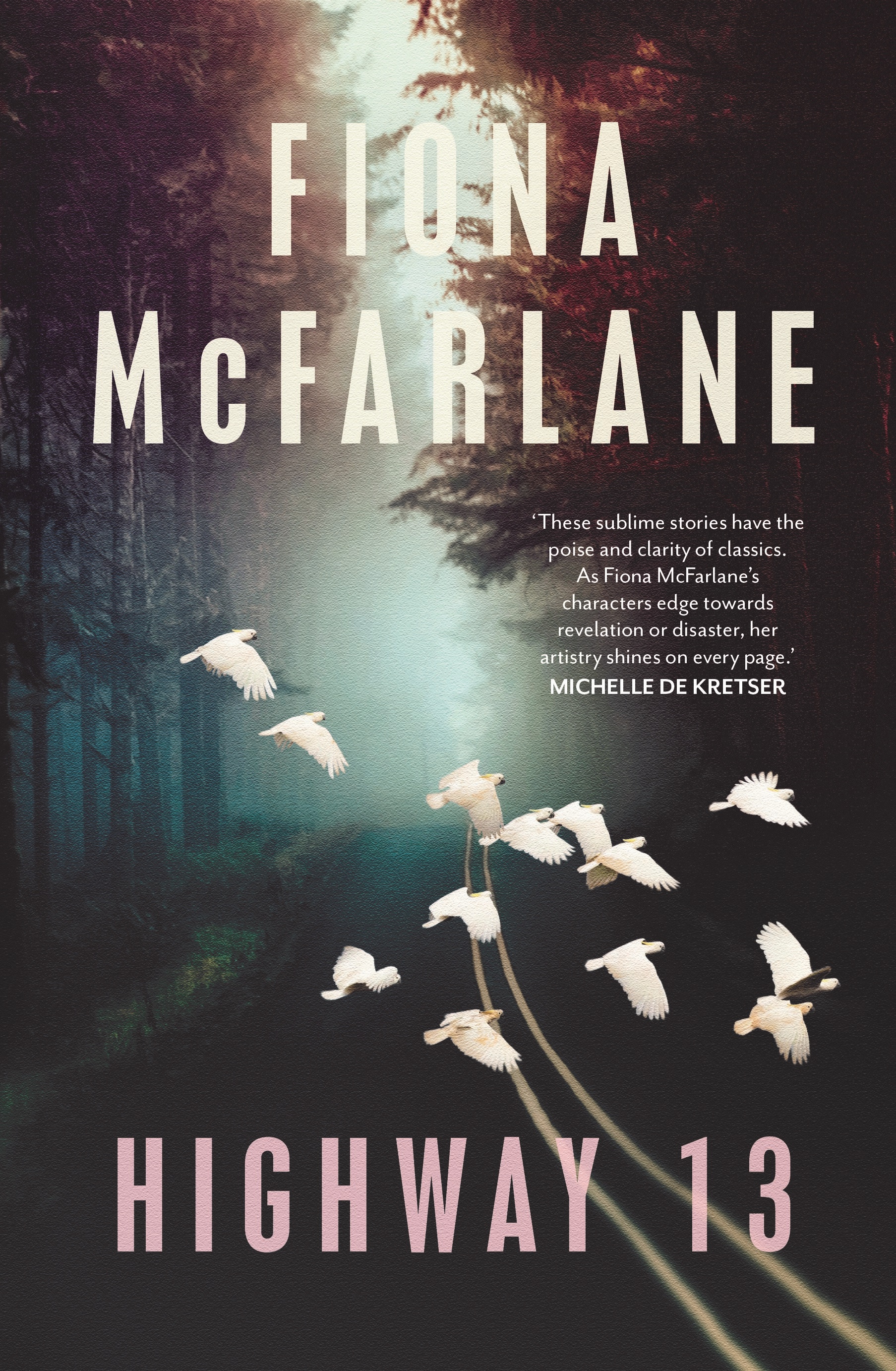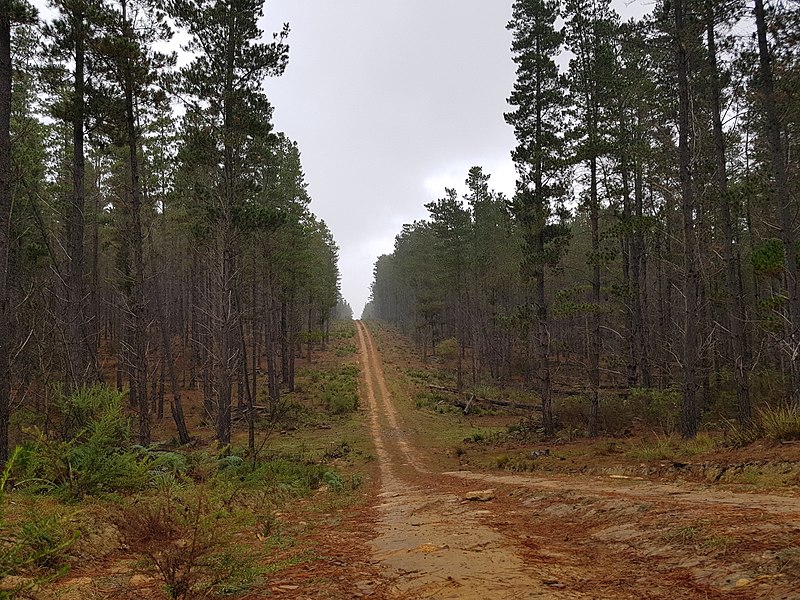
- Free Article: No
- Contents Category: Fiction
- Review Article: Yes
- Article Title: A chorus of souls
- Article Subtitle: Fiona McFarlane’s discursive theodicy
- Online Only: No
- Custom Highlight Text:
Jorge Luis Borges thought the appearance of a major new author or creative work should prompt a realignment of literature’s family tree. Fresh genealogies of influence suddenly manifested, while old antecedents could find themselves pruned to a nub. Borges knew that actions in the present can remake our sense of past and future both.
- Featured Image (400px * 250px):

- Alt Tag (Featured Image): Geordie Williamson reviews ‘Highway 13’ by Fiona McFarlane
- Book 1 Title: Highway 13
- Book 1 Biblio: Allen & Unwin, $32.99, 298 pp
- Book 1 Cover Small (400 x 600):

- Book 1 Cover (800 x 1200):

- Book 1 Readings Link: https://www.readings.com.au/product/9781761067013/highway-13--fiona-mcfarlane--2024--9781761067013#rac:jokjjzr6ly9m
The dozen stories in Highway 13 use our ghoulish fascination with true crime as a come hither, but they really oblige readers to consider the supposedly innocent past as a field of latent and sinister possibility, where chance events are recast as fates and portents.
Australian readers of a certain age will immediately note the murders described in these pages loosely accord with those attributed to Ivan Milat: an individual who murdered at least five men and two women in the late 1980s and early 1990s, before burying their bodies in the Belanglo State Forest south of Sydney.
 Belanglo State Forest (photographed by Maksym Kozlenko via Wikimedia Commons)
Belanglo State Forest (photographed by Maksym Kozlenko via Wikimedia Commons)
McFarlane, quite sensibly, does not face these events directly: Milat’s psychopathy is a black hole that releases no information. What she designs instead is a broad, discursive, ‘suburban’ theodicy. She ponders the existence of evil through its effects on those ordinary lives and places that intersect with the killer’s serial predations.
Take the story ‘Demolition’. Set in 2003, it describes the physical destruction of the Biga family home (Paul Biga, as the murderer is named here, has been convicted of his crimes and any remaining family has scattered). We watch – or rather, hear – events from the next door neighbour’s home and are asked to consider them from the perspective of the wheelchair-bound former teacher named Eva Forsythe: a woman gentle-hearted enough to permit the company, on this day, of a hack writer who interviewed her years before and who has swung back to wring one more article out of the collective pain, but wise enough to continue to withhold information that is significant.
As authorities restrain a growing crowd of gawkers excited at the prospect of destruction and potential souvenirs, the writer witlessly probes Eva’s memories of years spent living cheek by jowl with the Biga family. Even when the old woman is truthful, the writer will not hear what she has to say.
The Biga house was only rented to them, Eva insists, by its original owners; its imminent destruction is a combination of bureaucratic misdirection and primitive superstition. What Eva does not say is that the original owners moved because, as a teenager, she was discovered in bed with the daughter of the house. The pair were in love; their parents were appalled.
As the men outside cheer and clap the destruction of Eva’s most painful and treasured memories, the teacher wonders if some residue of the time with her young lover had not lingered in the dwelling. Why else would the young Paul – quiet, polite, a helpful weekend worker in their garden – send her a letter of carefully articulated pornographic desire all those years ago, unless he inherited the room where her own erotic existence was unveiled?
This is McFarlane writing at ground zero. Yet she is equally capable of playing six degrees of separation with her cast. ‘Hostel’, for instance, set in 1995 in Sydney’s gentrifying inner-western suburbs, plays similar material for sour laughter and a sense of dread that is strengthened by the slanted manner in which it is told. The narrator is a woman who, in the near present, recalls a couple named Roy and Mandy. Careless, carefree types, confident in their social status, education, wealth and youth, Roy and Mandy are kindly generous, for a time, to their marginally less favoured friend and once told her of a chance encounter they had had with a girl, known only as ‘S’.
The young woman had fallen out with her boyfriend and was, for that moment, without a place to go. Roy and Mandy invited her back to their handsome terrace, heard the girl’s story with sympathy and tea, and made up a sofa for the night: a thoughtless act of trust by a couple who remembered the thrills and palls of backpacker travel. By morning ‘S’ was gone, leaving nothing but an appreciative note.
The postscript of this story came several months later, when Mandy read a newspaper article about a pair of Swiss backpackers, Daniel and Sabine, who had gone missing while hitchhiking in southern New South Wales. Their remains were subsequently discovered by mushroom foragers in a State Forest. Both had been shot; Daniel had been stabbed.
The narrator, who has held this story with tongs up until now, finding subtle fault with a couple who had failed to even remember the dead girl’s name, surprises herself in one sincere and unguarded moment: ‘Until then, I had never taken seriously the concept of evil. It was too abstract, I thought, and too convenient. Of course there was no power that moved in darkness through the world, recruiting some people and striking others.’ But the feeling she has while watching footage of the search helicopters on television at the time – a lurch in her stomach and tingle at the roots of her hair – figures like a negative aesthetic response. Her body does not believe her rationalising, and all the drollness of her telling cannot expunge the horror that attends it.
The collection pursues this dark thread back in time. The earliest story in the collection, ‘Lucy’, set in the early 1950s though placed last in the book, furnishes a prehistory of the murderer’s parents and family, one that tellingly leaves off at the moment when Peter Biga’s mother accepts his father’s marriage proposal. That story, ‘Abroad’, in which the crass, confected horror of the American holiday covers for a real and durable sense of terror and survivor’s guilt, takes us to the very edge of Biga’s universe of evil, just as ‘Lucy’ take us to its origin story.
McFarlane goes everywhere, sees everything, feels everything through her creations. Hers is a tonally adroit collection and one in which the author always has a new seam of narrative potential to mine or a new character to inhabit.
Except one: the killer himself. The central achievement of Highway 13 is to refuse the blandishments of the figure who shapes its assembled stories. He remains, as he must, unknowable, even unthinkable. What McFarlane gives us instead is a chorus of souls united in the face of violence, though if only (as Patrick White put it in The Tree of Man) ‘on the common ground of frailty’.


Comments powered by CComment